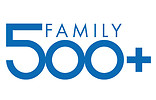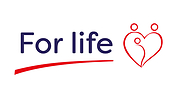Go to main menu | Go to submenu | Skip to content
Poland as a leader in the fight against social disparities
21-10-2018
Poland took a high 30thplace in the first Human Capital Index of the World Bank. What is more, the report prepared by international experts of Oxfam demonstrates that our country is the world leader in terms of expenditures for fighting against social disparities. That is not all. As results from the most recent Eurostat data, poverty among Polish children is even lower than in Germany or Sweden.
The Human Capital Index: the 30thplace for Poland
It turns out that the effectiveness of the social and economic programmes currently implemented in Poland is appreciated not only by their recipients, but also international experts and organizations. The annual meeting of the Member States of the International Monetary Funds and of the World Bank Group, which is taking place in Indonesia now, involved the presentation of the first Human Capital Index of the World Bank.
Poland took a high 30thplace in a group of 157 countries. Poland’s result is 0.75 on a scale from 0 to 1. To compare, the result of the leading Singapore was equal to 0.88. The second and third places were taken by South Korea and Japan accordingly.
The explain, a result of 0.5 means that the future development potential of a country is lower more than two times that the potential one, which reflects in significant economic losses over a period of 50 years.
Carlos Piñerúa, representing the World Bank in Poland and in the Baltic states, assessed that “Poland’s result exceeds the regional average” and “is higher than indicated by income per capita”. – The newly published Index confirms our current analyses which demonstrated that Poland has succeeded in economic terms in recent years – said Carlos Piñerúa.
The scenario of the country’s going rack and ruin in economic terms, as put forward by the opponents to the social policy of the Law and Justice Government, did not materialise. On the contrary, international experts point out Poland’s success in terms of economic development.
We are leaders in the fight against social disparities
Poland’s success will continue. The report prepared by international experts of Oxfam (the organization combating hunger around the world and supporting developing countries) indicates that Poland is now the world leader in terms of expenditures for fighting against social disparities. This means that none of the remaining 156 countries of the ranking has spent so much for social benefits.
Our country was also assessed favourably in the category of workers’ rights – it was placed 33rd. In the general ranking, Poland took the 20th place in a group of 157 countries.
The risk of poverty or social exclusion among Polish children is even lower than in Sweden
As results from the most recent Eurostat data, 17.9% of Polish children were at risk of poverty or social exclusion in 2017. This figure implies a decrease by 6 pp against the preceding year.
Poland was placed ahead of France (23.3%), Belgium (22%) or Sweden (19.4%) among others. We were also better than our Western neighbourhood country – 18% of children were at risk of poverty or social exclusion in Germany. On the other hand, the lowest risk of poverty or social exclusion among children was recorded by the Czech Republic last year – the indicator was equal to 14.2%. Following places were taken by Denmark (14.5%) and Finland and Slovenia (15.1% each). The worst situation was characteristic for Romania and Bulgaria (nearly 42%).
From the Eurostat data also results that the risk of poverty or social exclusion among Polish children has diminished at the fastest pace that across the European Union in recent years. Still in 2008, approx. 33% of Polish children were affected, i.e. the analysed indicator has decreased by as much as 15 pp over 9 years. It should be emphasized that the absolute number of children at risk of poverty or social exclusion has decreased from approx. 2.5 million in 2008 to 1.2 million in 2017. No other country has recorded such a great improvement – Romania and Latvia, which took the following places in the ranking, have managed to decrease the percentage of children at risk by approx. 8-9 pp, with many countries not recording a significant change of the indicator or recording even an increase.
Calculated by Eurostat, the at risk of poverty or social exclusion indicator combines data of three sub-indicators: the at risk of relative poverty indicator including social transfers as income, the indicator of severe material deprivation and the indicator of very low work intensity in a household. Individuals are counted only once, even if affected by more than one form of exclusion.





